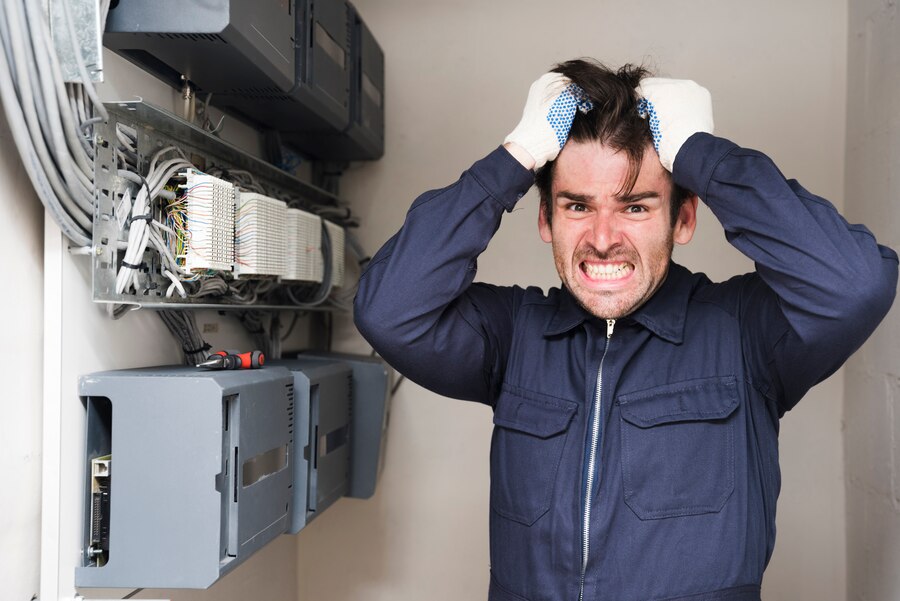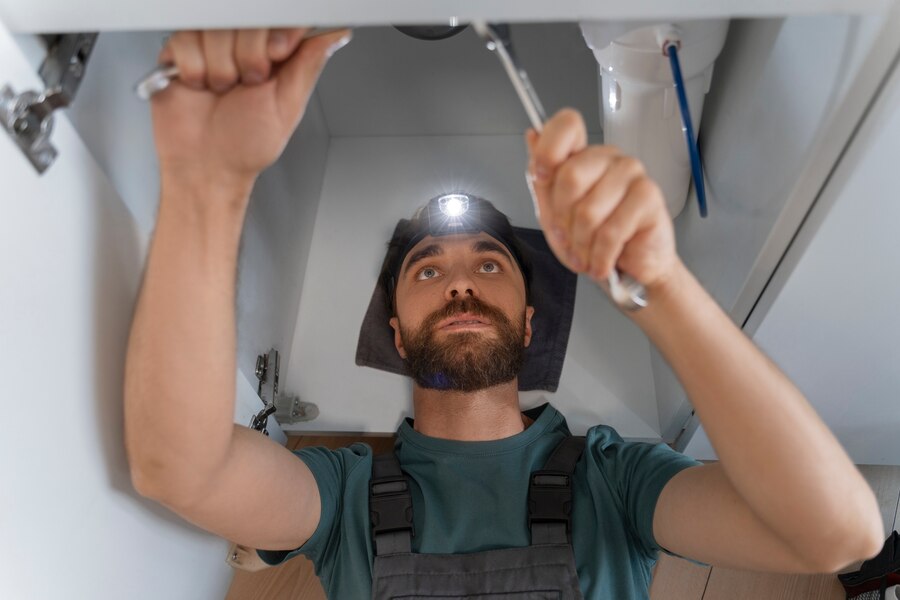
As temperatures plummet in Placentia, California, ensuring your furnace operates smoothly becomes paramount for maintaining a cozy and comfortable home environment. Yet, encountering complications with your furnace’s ignition can swiftly escalate into a vexing ordeal. From chilly nights to frosty mornings, a malfunctioning furnace can disrupt your daily routine and leave you longing for warmth and comfort. For prompt and reliable assistance with your furnace ignition issues, consider consulting with a specialist like Tradewind Heating and Air.
Heating and Air Conditioning Services
In this comprehensive guide, we delve into the intricate realm of furnace ignition issues, shedding light on common problems that homeowners encounter. Whether you’re grappling with a furnace that refuses to ignite or experiencing intermittent heating failures, we’ve got you covered. Our aim is to empower you with the knowledge and troubleshooting strategies necessary to diagnose and resolve furnace ignition issues promptly, allowing you to reclaim control over your home’s heating system and restore tranquility to your living space.
Check Thermostat Settings
The initial step in addressing furnace ignition issues is to examine your thermostat settings thoroughly. Begin by ensuring that the thermostat is correctly configured for heating and that the temperature setting is higher than the current room temperature. Sometimes, incorrect thermostat settings can prevent the furnace from igniting, so double-checking this aspect is crucial.
If the thermostat settings appear to be correct but the furnace still fails to ignite, you may need to delve deeper into the troubleshooting process. However, before moving on to more complex diagnostics, it’s essential to rule out any potential issues with the thermostat itself. This can be done by testing the thermostat’s functionality using a simple procedure.
Start by turning the thermostat off completely, then wait for a few moments before turning it back on. Listen carefully for any clicking sounds, which indicate that the thermostat is sending signals to the furnace. Additionally, you can try adjusting the temperature setting slightly higher to see if it prompts the furnace to ignite. If you don’t hear any clicking sounds or notice any response from the furnace, there may be an issue with the thermostat that requires further attention. In such cases, you may need to consult a professional HVAC technician to diagnose and resolve the problem effectively.
Inspect Pilot Light or Ignition System
The pilot light or ignition system serves a crucial role in initiating the heating process within your furnace. If either of these components is faulty or malfunctioning, it can result in your furnace failing to ignite and provide warmth to your home. Therefore, conducting a thorough inspection of the pilot light and ignition system is essential when troubleshooting furnace ignition issues.
Begin by examining the pilot light to determine whether it is lit. The pilot light is typically located near the burner assembly and should emit a steady blue flame when functioning correctly. If the pilot light is not lit, refer to the manufacturer’s instructions for your specific furnace model to safely relight it. Follow the prescribed steps carefully to avoid any potential hazards associated with handling gas appliances.
In the event that the pilot light is lit but the furnace still fails to ignite, it suggests a potential issue with the ignition system. The ignition system comprises various components, including igniters, sensors, and control modules, all of which play integral roles in initiating the heating cycle. If you suspect a malfunction in the ignition system, it is advisable to seek professional assistance from a qualified HVAC technician. They possess the expertise and diagnostic tools necessary to identify and address any underlying issues effectively, ensuring the optimal performance and safety of your furnace.
Ensure Proper Gas Supply
A critical factor contributing to furnace ignition problems is the availability of a proper gas supply. Without an adequate flow of gas, your furnace will be unable to ignite and produce heat effectively. Therefore, it is essential to conduct a thorough inspection of the gas supply system to identify and rectify any potential issues.
Begin by checking the gas valve to ensure that it is fully open. The gas valve controls the flow of gas into the furnace, and if it is partially or completely closed, it can impede the ignition process. Ensure that the gas valve is in the “on” position, allowing gas to flow freely to the furnace.
Additionally, inspect the gas line for any obstructions or blockages that may be restricting the flow of gas. Ensure that the gas line is free from debris, dirt, or other foreign objects that could hinder the delivery of gas to the furnace. If you notice any signs of damage or deterioration in the gas line, such as cracks, leaks, or corrosion, it is imperative to address these issues promptly to prevent safety hazards and ensure uninterrupted operation of the furnace.

Clean or Replace Air Filters
One often overlooked yet crucial aspect of furnace maintenance is the condition of the air filters. Over time, air filters can become clogged with dust, dirt, pet dander, and other airborne particles, hindering airflow and compromising the performance of your furnace. To prevent ignition issues and ensure optimal efficiency, it is essential to regularly inspect and clean or replace your furnace’s air filters.
Begin by locating the air filter compartment, typically located near the return air duct or furnace blower. Remove the access panel and carefully slide out the air filter. Examine the filter for any signs of dirt, dust buildup, or damage. If the filter appears dirty or clogged, it is recommended to clean or replace it, depending on the type of filter.
Regularly cleaning or replacing your furnace’s air filters not only improves airflow and prevents overheating but also helps maintain indoor air quality and prolongs the lifespan of your HVAC system. By ensuring unobstructed airflow, clean air filters promote efficient operation and reduce the likelihood of ignition issues, providing you with consistent comfort and peace of mind throughout the heating season.
Test for Electrical Issues or Sensor Malfunctions
In cases where traditional troubleshooting methods fail to resolve furnace ignition issues, it’s crucial to examine potential electrical problems or sensor malfunctions. Electrical issues or sensor failures can disrupt the ignition process and prevent your furnace from operating efficiently. Follow these steps to diagnose and address such issues:
- Inspect Electrical Connections: Begin by checking the furnace’s electrical connections to ensure they are secure and free of corrosion or damage. Turn off the furnace’s power supply before inspecting the wiring to avoid the risk of electric shock. Examine each connection carefully, tightening any loose terminals and cleaning off any corrosion with a wire brush if necessary.
- Test Sensors: Your furnace is equipped with various sensors that play a critical role in its operation, including flame sensors, limit switches, and pressure switches. These sensors monitor different aspects of the furnace’s performance and safety mechanisms. Use a multimeter to test the continuity and functionality of each sensor according to the manufacturer’s specifications. Replace any sensors that show signs of malfunction or fail to produce accurate readings.
- Check Control Board: The furnace’s control board acts as the brain of the system, coordinating the operation of various components and responding to input from sensors and thermostats. Inspect the control board for signs of damage, such as burnt components or loose connections. If the control board is malfunctioning, it may need to be repaired or replaced by a qualified technician.
- Consult a Professional: If you are unfamiliar with electrical systems or unsure how to perform these tests safely, it’s best to seek assistance from a licensed HVAC technician. A professional technician has the expertise and specialized equipment to diagnose and repair electrical issues and sensor malfunctions accurately. They can also provide recommendations for preventive maintenance to avoid future problems and ensure the reliable operation of your furnace.
Furnace Ignition Issues Guide at Tradewind Heating and Air
Dealing with furnace ignition issues can be frustrating, especially during the cold winter months in Placentia, California. By following the troubleshooting tips outlined in this article, you can hopefully identify and resolve the issue with your furnace’s ignition. If you are unable to fix the problem on your own, don’t hesitate to contact Tradewind Heating and Air for professional assistance. Our team of experienced technicians is here to help you stay warm and comfortable all winter long.

FAQs
- What are furnace ignition issues, and why are they important to address? Furnace ignition issues refer to problems with the furnace’s ability to ignite and produce heat. These issues are important to address because they can disrupt the comfort and functionality of your home’s heating system, especially during colder months.
- What are some common signs of furnace ignition problems? Common signs of furnace ignition problems include a lack of heat production, frequent cycling on and off, strange noises during operation, and the presence of unusual odors or smells.
- What should I do if my furnace fails to ignite? If your furnace fails to ignite, start by checking the thermostat settings to ensure they are correct for heating. Then, inspect the pilot light or ignition system for any issues. If you’re unable to resolve the problem, it’s best to contact a professional HVAC technician for assistance.
- How can I troubleshoot furnace ignition issues at home? You can troubleshoot furnace ignition issues at home by checking thermostat settings, inspecting the pilot light or ignition system, ensuring proper gas supply, cleaning or replacing air filters, and testing for electrical issues or sensor malfunctions.
- When should I seek professional help for furnace ignition problems? You should seek professional help for furnace ignition problems if you’re unable to resolve the issue on your own or if you’re uncomfortable performing troubleshooting tasks involving gas, electricity, or complex furnace components.
- How can I prevent furnace ignition issues in the future? To prevent furnace ignition issues in the future, it’s important to schedule regular maintenance for your heating system, including professional inspections and cleaning. Additionally, replace air filters regularly and address any potential issues promptly to ensure optimal furnace performance.
- Are furnace ignition issues covered by warranty? Whether furnace ignition issues are covered by warranty depends on the terms of your furnace warranty. Some warranties may cover certain types of repairs or replacements related to ignition issues, so it’s essential to review your warranty documentation or contact the manufacturer for clarification.
- Can DIY repairs resolve furnace ignition problems? In some cases, simple DIY repairs may resolve minor furnace ignition problems, such as relighting the pilot light or replacing a dirty air filter. However, for more complex issues or those involving gas or electrical components, it’s best to seek professional assistance to avoid safety risks and ensure proper repairs.
- What should I do if I smell gas coming from my furnace? If you smell gas coming from your furnace, immediately turn off the gas supply, open windows and doors to ventilate the area, and evacuate the premises. Do not use any electronic devices or sources of ignition, and contact your gas utility provider and a professional HVAC technician for assistance.
-
How can I find a reliable HVAC technician to help with furnace ignition issues? To find a reliable HVAC technician to help with furnace ignition issues, consider asking for recommendations from friends or family, checking online reviews and ratings, verifying licensing and insurance credentials, and contacting reputable HVAC companies in your area.
